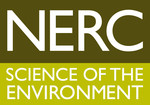First study of the global Nickel and ALuminium Layers in the upper atmosphere (NIALL)
Middle/Upper Atmosphere – Current Projects
 Project Reference: NE/P001815/1
Project Reference: NE/P001815/1
http://gtr.rcuk.ac.uk/projects?ref=NE%2FP001815%2F1#
The edge of the Earth's atmosphere is approximately 100 km above the surface, in a region known as the mesosphere/lower thermosphere (MLT). This part of the atmosphere is subject to high energy inputs from above in the form of extreme UV radiation and energetic particle precipitation, and a roughly equal amount of energy from breaking atmospheric gravity waves which propagate up from the lower atmosphere. The MLT also acts as a filter of waves that propagate from the troposphere into the ionosphere, which has important implications for space weather. Furthermore, energetic solar protons and electrons from the radiation belts produce highly reactive species in the MLT, which can then be transported down into the stratosphere, affecting the ozone layer and impacting on tropospheric climate. The MLT is also extremely sensitive to climate change, due to the cooling effect of increasing greenhouse gases such as CO2, ozone depletion in the stratosphere, and changes to the large-scale atmospheric circulation. However, it is a difficult region in which to make direct measurements, because it is more than 40 km higher than altitudes reached by research balloons or aircraft, and is at least 100 km lower than short-lived satellite orbits. Rocket-borne measurements do provide direct access, but are unsuitable for sustained global measurements.
Fortunately, the ablation of cosmic dust particles entering the atmosphere from space deposits metal atoms such as Na and Fe in layers around 90 km altitude. These layers can be observed with lasers from the ground (lidar) and by satellite-borne spectrometers, providing detailed information about the chemistry and physics (wind, temperature, gravity waves) of the region. There is increasing evidence that accurate simulations of changes to the Earth's climate require models with a well resolved and accurate stratosphere and mesosphere, and so metal species in the upper atmosphere offer a unique way of observing this region and of testing the accuracy of climate models.
The purpose of this proposal is to make the first ever study of Ni and Al chemistry in the MLT. The Ni layer has recently been observed for the first time: it is much broader than the well-studied layers such as Na and Fe, and the concentration of Ni atoms is more than 10 times higher than expected based on its cosmic abundance. These very unexpected features need to be understood, since there is the clear potential to develop lidar observations of the Ni layer as a probe of the entire MLT from 70 to 115 km.
Aluminium makes a very interesting contrast with Ni. The Al-O bond is so strong that it is very likely there is a substantial layer of the AlO radical in the MLT. This species has a strong optical absorption in the green part of the visible spectrum, and so there is the exciting prospect of making lidar observations of AlO and developing an accurate temperature probe over the full range of mesospheric temperatures.
The project will involve first making a series of experimental studies of key neutral and ion-molecule reaction rates in the gas phase, in order to understand the unique characteristics of the Ni layer and the likely concentration of the AlO layer. At the same time, we will use a novel instrument to simulate the ablation of Ni and Al from micron-sized fragments of meteorites such as Allende and Murchison. From this a model will be developed which predicts the injection rates of these elements into the MLT as a function of location and season.
The chemistry of Ni and Al, together with their meteoric ablation rates, will then be placed into a global chemistry-climate model. Of particular interest will be to see how the Ni and AlO layers are predicted to respond to perturbations caused by major solar storms, the 11-year solar cycle, and climate change in the MLT over the past 70 years and projected forward to 2100.
